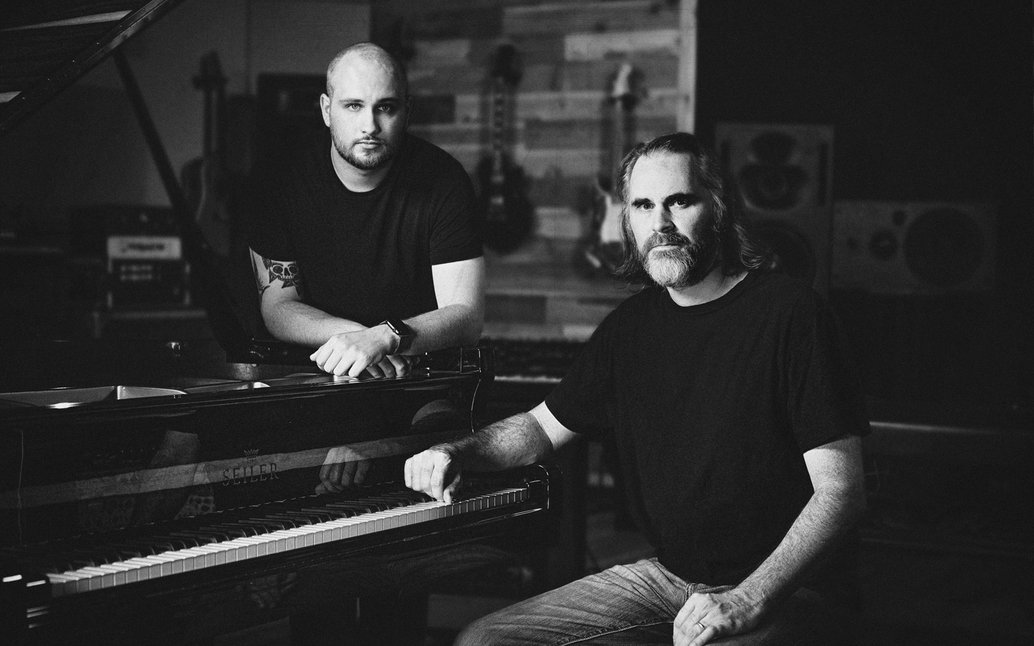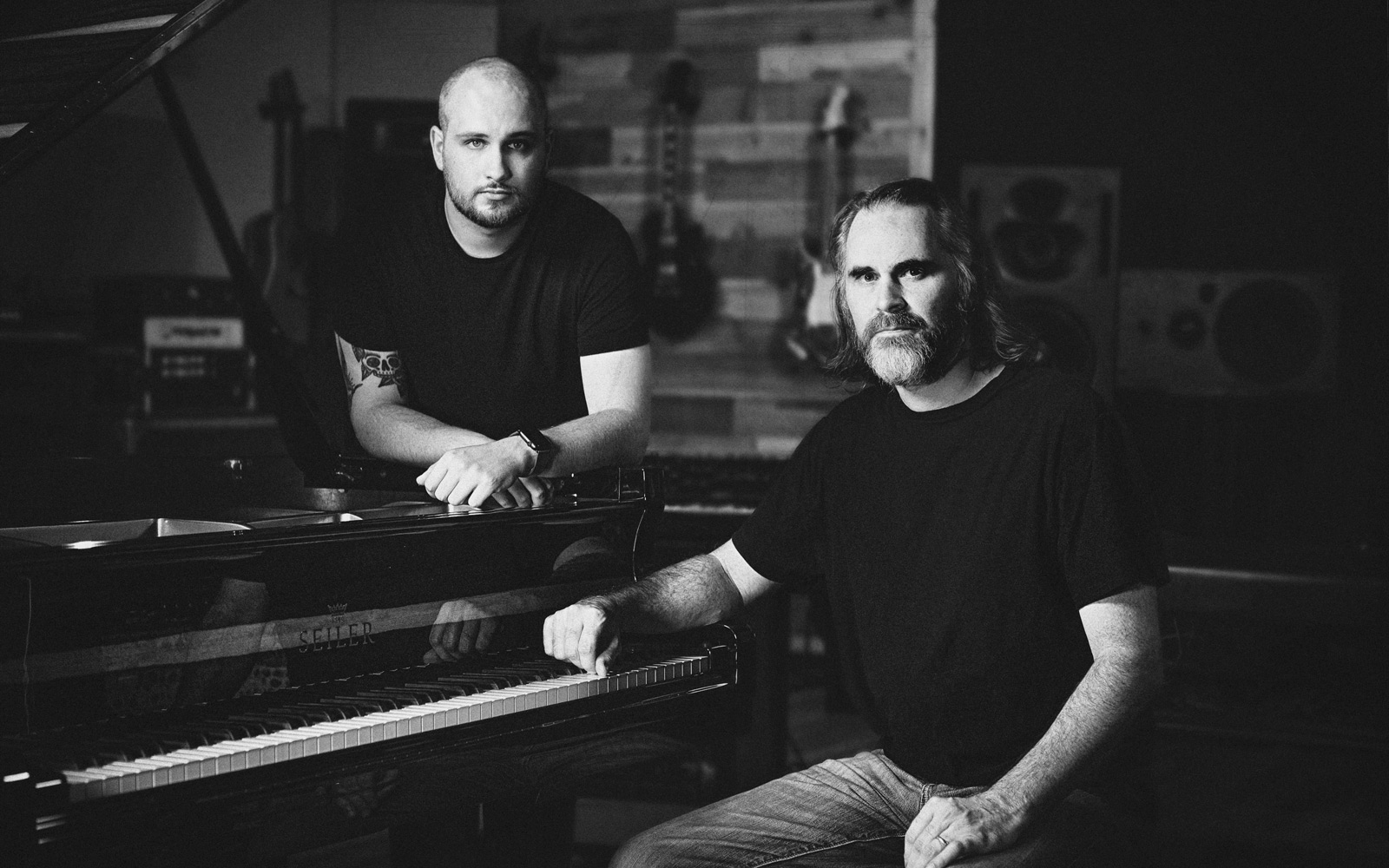FEATURES
By Dash Lewis · August 12, 2024
If you type “dark cello music” into YouTube’s search bar, you’ll be surprised at the number of results you get. It’s a robust niche with hundreds upon hundreds of videos—some running for up to 10 hours. Many of them claim to have meditative or otherwise calming effects, and their gothic black-and-white photography is accompanied by waves of resonant, melancholy tones. These videos often have tens of thousands of views or more. One of the most popular recordings in this particular corner of YouTube is just three minutes long, and its title is a unique combination of search terms and poetry. “The Darkest Cello Music – ‘Beginning To End,'” uploaded by Hendyamps Studios on August 31, 2019, boasts 1.6 million views. Nearly 1,100 comments offer a loose consensus on the composition’s impact and beauty.
It’s a simple and effective clip: cellist Aimee Norris sits under a spotlight in a dark recording studio, the camera panning around the body of the instrument, occasionally hovering above it, capturing Norris lost in the playing, eyes closed, body moving in time with the melody. Layers of cello flow over one another, gently draping like rustling curtains. The song’s simple melody has a strong sense of finality; you could easily imagine the chiaroscuro scene it captures in a neo-noir or tragic drama. Most importantly, it sounds incredible—as if you’re hearing it from inside the cello itself. Even when played through dim laptop speakers, you can almost feel the vibration of the bow scraping across the strings.
The masterminds behind Hendyamps Studios, a three-pronged operation that includes music composition and licensing, engineering services and handcrafted boutique audio gear, are Houston-based Chris Henderson (who most people call Hendy) and Nashville-based Landon Hook. The two have been recording together for over 15 years, but have been around each other for much longer. “I’ve known this kid since he was in first or second grade,” Hendy says in a slight Texas accent, speaking via video call from his studio’s 1,200-square-foot recording space. “(Eventually) I became a teacher and his dad was my boss. Believe it or not, I ended up teaching Landon in class.”
The Hook and Henderson families knew each other very well, and Landon and Hendy bonded over their shared love of film scores and sweeping, cinematic music. They worked together regularly, both among themselves and in respective outside bands, with Hook primarily playing bass and Hendy on piano and guitar. Beginning To End, written many years after they had worked together as a duo, was essentially created as a pleasant writing exercise. “We didn’t expect it to do anything other than have fun,” explains Hook. “We just wanted a demo with a cello,” laughs Hendy.
Their goal for “Beginning To End” was to create something that captured their love of “dark music,” to develop a sound that, as Hendy puts it, “nobody pushes to the extreme.” Landon knew Aimee Norris, so they set out to create the most emotionally devastating cello composition they could. Hendy recalls his first conversation with Hook about the vibe: “I said to Landon, ‘I’d really like to hear what it sounds like when you just don’t let up. When you’re relentlessly dark.’” The two wrote the piece, recorded it with Norris and posted the video without thinking. It started to blow up. “Something happened and YouTube blew up,” Hendy says. “It was like, ‘Landon, I think we’re actually musicians.’”
The Hendyamps’ business partnership grew organically from their musical collaboration. While Hendy and Hook wrote songs together, each of them immersed themselves in the engineering side of things. “Before you knew it, Hendy was building the studio,” says Hook. “I came in to run it and work as the engineer.” Both were self-taught artists whose obsession with the craft developed in parallel; after a while, it just made sense that their parallel paths would converge.
Hook grew up in a very artistic household; his mother studied piano at the Cincinnati Conservatory of Music and during his early childhood, his parents owned a photography business. “My house was always filled with music,” he recalls, adding, “I was constantly surrounded by creativity and visual art.” Before finally settling on the bass, Hook first learned piano. He began to develop an ear for how the sound of different instruments can differ. “I remember playing different basses and different pianos from a very young age and not really knowing what I was hearing,” he says. “But I knew that I liked the sound I liked better. I remember feeling like there was something missing when I played certain instruments, and other instruments filled that gap.”
Eventually, he started playing in bands and discovered that the key to performing well in an ensemble had as much to do with overall sound as it did with his technical ability. “When I started playing live with a (group), I learned that I had to fit in not just musically, but sonically as well,” he explains. “It’s not just about the notes I play, but the tone I produce and the frequencies I cover. If I wanted to be a good bass player, I had to learn not only how to play the right notes and fit grooves, but how to sound good in a mix.” From that realization, a fascination with recording sounds himself developed. He first bought a simple USB interface before recording bands in high school. He started working at Hendy’s studio, recording after school during the week and late at night on weekends. After graduating, he moved to Ohio and worked full-time in a studio for a couple of years. He considered going to college to study audio engineering, but couldn’t balance the tuition with his own ongoing field experience. “It would have cost me $100,000 to go to college,” he says. “Why would I spend $100,000 on a piece of paper saying I know how to do what I already do full-time?” He packed up his things and returned to Texas to continue working with Hendy.
When Hendy built his studio in Sugar Land, a small town southwest of Houston, in 2017, Hook came on board as manager. “I can still remember laying the floor, installing the paneling, and running cables for the studio build while watching the Houston Astros win their first World Series title,” he says in an email. Today, Hook lives in Nashville and handles the mix side of Hendyamps’ engineering business in addition to working for his own clients.
Hendy taught himself sound engineering in a similar way. “I’ve been obsessed with sound my whole life,” he says. “I don’t mean what you’d normally think of as playing. I was always much more interested in textures.” He studied electronics in high school, but he remembers most of all straddling capacitors and making them explode. “We had competitions to see which capacitor could shoot the furthest across the room,” he recalls. In his twenties he played in rock bands and studied to be a teacher, eventually teaching philosophy and theology. All the while, his curiosity about recording music grew.
“To be honest, we all started the same way,” he points out. “You have an idea and you think, ‘How do I get it on my computer? I have Cubase or Pro Tools, but my guitar isn’t on my computer.'” He describes the steps from there: calling Sweetwater, freaking out about the price of the necessary equipment, buying it anyway, and then starting to record. “You mix stuff that sounds good to you and sounds like crap compared to everything else,” he says, “and eventually you get better at it. And then people call and say, ‘Hey, dude, I like your music. Can you do my stuff?'” For Hendy, his interest became an obsession that eventually became a calling.
Hendy now runs the Houston branch of Hendyamps, handling the tracking and mastering portions of their engineering services. He is also responsible for the third part of the company, designing and building guitar amplifiers and studio equipment. Hendy again followed what he calls the “endless bunny trail of fun” and taught himself how to build electronics, using his knowledge of exploding capacitors as a starting point. He started with guitar amplifiers and learned about tube technology by poring over schematics from the 1920s and 1930s. The path was similar to his career as a recording engineer: buy components, build the equipment, sell one to finance more parts, and design a new circuit.
They both came together at a similar point. “You start buying all this great stuff that everyone recommends and you love it, and then you don’t like it anymore because it doesn’t do what you expect.” After a while, Hendy realized that the equipment he had outfitted his studio with wasn’t producing the sounds he wanted. “I can’t find anything that matches what I have in mind,” he says. “So I have to build something until it works.”
Hendy is best known for his rackmount equipment, thanks to the success of his Michaelangelo EQ. He had built the three-band stereo equalizer for his own use and briefly loaned it to a friend. That friend was incredibly impressed and asked Hendy to build him one himself. Things moved quickly from there. “He had a CNET “He had an interview shortly after and needed a good picture of himself in his studio,” explains Hendy. “So he asked me to bring a good camera and take a picture for him. The Michelangelo happened to be at the top of the rack, so the Michelangelo was pictured front and center in the CNET article.” The device went viral. Shortly after the article appeared, another mastering engineer contacted Hendy to buy one. A post praising the device appeared on the Gearspace forums, and demand exploded. “I’ve been on a waiting list for gear ever since,” says Hendy, laughing.
Between their various activities, Hendyamps Studios is booked and busy. Hook regularly travels to Houston for sessions, but just as often beams into the studio via Zoom. Their simple, natural workflow is the result of years of collaboration, developing a deep trust and an unspoken vocabulary. They’ve continued to release music—there are many more entries in their somber cello music series. Their other songs, like the droning desert soundscape of “Walter: Day of Wrath,” take different approaches to their signature vibrant gloom. They’ve followed their own vision from the start, making music and gear primarily for themselves. It’s paid off. “We just do whatever comes out of us and don’t expect anyone to like it,” Hendy explains. “It’s evolved into something that a lot of people have connected with and resonated with,” Hook says, a hint of awe in his voice.








